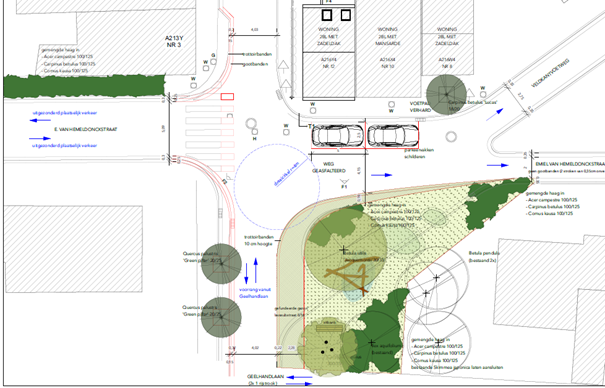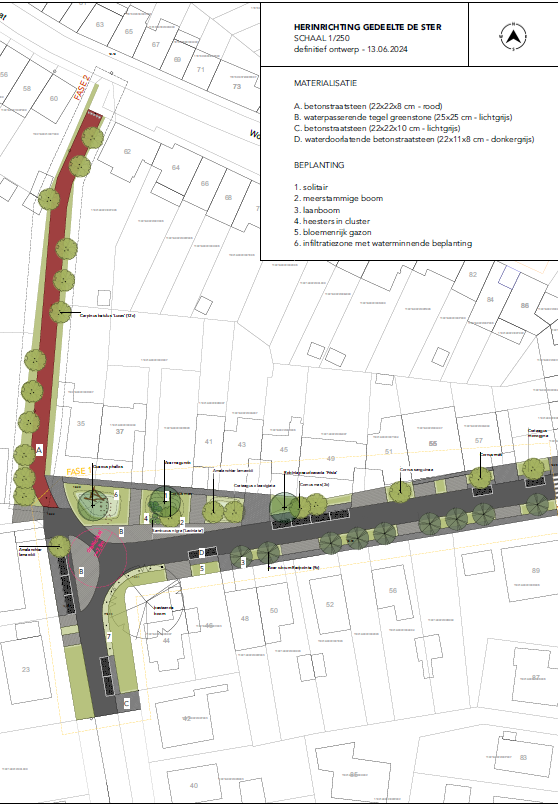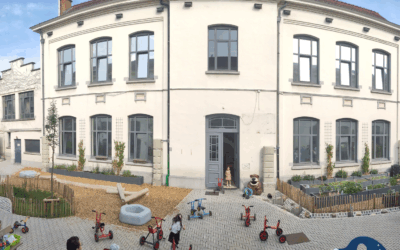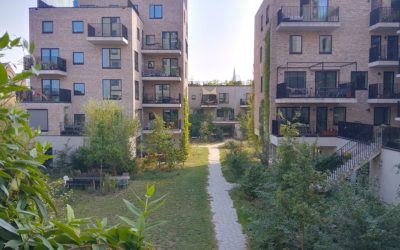Bringing nature into school playgrounds.
Removing grey areas in Hove
Das Projekt
The municipality of Hove is committed to dealing with water in a smart and future-oriented way. The new stormwater and drought plan provides a clear response to changing weather conditions and includes:
- an overall vision;
- a specific approach per sub-area;
- a concrete action list with priorities.
Softening projects have already been implemented in three locations:
- Jozef Lambrechtlei: wadis have been constructed on both sides of the street. These wadis collect rainwater, which can then infiltrate into the soil. This prevents clean water from going to the sewage treatment plant unnecessarily. It also ensures that groundwater is replenished.
- Onderwijsstraat: part of the street was softened and a green playground with wadi was created;
- De Ster: softened here, several wadis were constructed, more greenery and the cycle path was reconstructed.

Projektstandort
Beitrag(e)
Projektkosten
Teilnehmer

Municipality of Hove and its citizens.
Wie werden die Kriterien des Ziels erfüllt?
Gebäude und Infrastrukturen
- So wenig Veränderung der ursprünglichen Landschaft wie möglich / so viel Natürlichkeit wie möglich, um graue und betonierte Flächen zu ersetzen (e.g. Dach- und Wandbegrünung, Begrünung der Umgebung, Einbeziehung der bestehenden Landschaft in die Infrastruktur);
- Gegebenenfalls Verwendung einheimischer Arten/Unterarten, die widerstandsfähiger und resistenter gegenüber dem Klimawandel sind;
- Provide amenities with sufficient space/length/thickness to ensure the creation of habitats, green-blue areas and veins.
Mögliche Initiativen, an denen das Projekt beteiligt ist:

Langfristige Wartung
The plan proposes a characterisation of streets according to the hydrological function they can fulfil (infiltration street, retention street, aquifer street).
It also defines locations where we see opportunities for future actions. This will allow the municipality to get straight to work on future projects. We do all this not only on the public domain, but also with an eye for opportunities on private property. The goal is a climate-resilient water system that helps prevent flooding and drought while improving water quality.
Vorteile
Climate change is having a major impact on water management in Flanders. Winters become wetter, causing streams and rivers to reach high water levels more often. In summer, on the other hand, less rain falls, leading to drier soils. Moreover, summer rain showers are becoming more intense, which is already noticeable now. Hove’s rainwater and drought plan identifies local bottlenecks and proposes practical measures. In this way, we ensure that rainwater infiltrates better, is buffered or is discharged in a delayed manner. This plan provides a long-term vision of a resilient water system for our municipality.
With this plan, we aim to:
- limit flooding;
- cope better with drought;
- improve water quality;
- implement climate-adaptive solutions for rainwater;
- make targeted investments in a sustainable and robust water system.
Other projects linked to the objective: "Buildings and infrastructures"
Bijgaardehof and Bijgaardepark
Abandoned factory site is being transformed into a park extension and collective housing project that integrates biodiversity.
Facade garden Blankenberge
The existing side wall of the school was considered an ideal place to shape a vertical garden.


